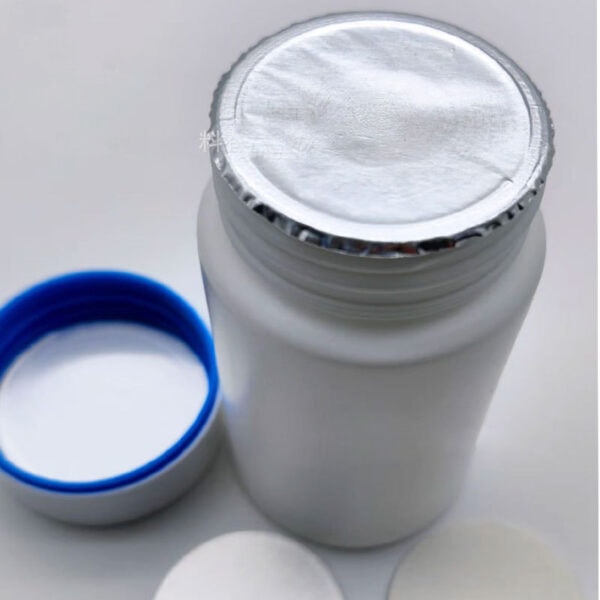Improper sealing can lead to product spoilage, contamination, or leakage, causing customer dissatisfaction and financial losses. Selecting the wrong sealing method can result in inefficiencies and production delays. This article explains the key differences between induction sealing and heat sealing, helping businesses make informed decisions.
Induction sealing uses electromagnetic induction to heat a liner inside a cap for airtight sealing, while heat sealing employs direct heat and pressure to join two layers of packaging material.
Understanding these technologies ensures the right application for sealing tasks, improving product integrity and production efficiency.

What is Induction Sealing?
Induction sealing is a non-contact sealing process that uses electromagnetic induction to heat a conductive foil liner placed inside a container’s cap. When the capped container passes under an induction coil, an electromagnetic field is created, generating heat in the foil liner. This heat activates the sealing layer of the liner, bonding it to the container rim to create a tamper-evident and airtight seal.
Key Benefits of Induction Sealing:
- Airtight Sealing: Ideal for products like liquids and powders that require leak-proof packaging.
- Tamper Evidence: Provides a visible indication of tampering, ensuring consumer trust.
- Speed and Efficiency: Induction sealing machines are fast, making them suitable for high-volume production lines.
Induction sealing is widely used in industries like pharmaceuticals, beverages, and chemicals. For example, when pairing this technique with a liquid filling machine, the result is a seamless, spill-proof packaging solution.
What is Heat Sealing?
Heat sealing uses direct heat and pressure to bond two layers of packaging material, such as thermoplastics. A heated sealing bar or plate presses the materials together, melting their surfaces to create a secure seal.
Key Benefits of Heat Sealing:
- Versatility: Compatible with a wide range of materials like laminates and plastics.
- Customizable: Ideal for flexible packaging designs, including pouches, blisters, and sachets.
- Cost-Effective: Simple machinery with low initial investment compared to induction sealing systems.
Heat sealing is commonly applied in the food and beverage industry, often used alongside bottle labeling machines to streamline the packaging process.

Key Differences Between Induction Sealing and Heat Sealing
| Feature | Induction Sealing | Heat Sealing |
|---|---|---|
| Mechanism | Uses electromagnetic induction. | Employs heat and pressure. |
| Material Compatibility | Requires metallic liners. | Works with plastics, laminates, etc. |
| Contact Requirements | Non-contact process. | Requires direct contact. |
| Applications | Best for rigid containers like bottles. | Versatile for flexible packaging. |
| Speed | High-speed operation. | Slower for high-volume production. |
Advantages and Limitations of Induction Sealing
Advantages:
- High speed and efficiency.
- Non-contact process ensures clean seals.
- Airtight and tamper-proof properties.
Limitations:
- Limited to containers with metallic liners.
- Higher initial equipment cost compared to heat sealing.
When combined with an industrial label printer, induction sealing creates a professional and market-ready product.
Advantages and Limitations of Heat Sealing
Advantages:
- Affordable and easy to operate.
- Compatible with a variety of packaging materials.
- Creates peelable or permanent seals, depending on material and settings.
Limitations:
- Slower for high-speed production lines.
- Inconsistent results if parameters like temperature and pressure aren’t optimized.

Industry Applications
Induction Sealing:
- Pharmaceuticals: Ensures tamper-evidence for medications.
- Beverages: Provides spill-proof packaging for liquids like juices.
- Chemicals: Prevents leaks of hazardous materials.
Heat Sealing:
- Food Packaging: Ideal for sachets, pouches, and trays.
- Electronics: Secures products in blister packs.
- Medical Supplies: Sterile sealing for items like syringes or gauze.
Choosing the Right Sealing Technology
- Induction Sealing: Best for airtight, leak-proof sealing of rigid containers. Ideal for high-speed lines.
- Heat Sealing: Suitable for versatile packaging needs, especially flexible materials. Cost-effective for smaller-scale operations.
Future Trends in Sealing Technologies
- Sustainability: Innovations in eco-friendly materials for heat sealing.
- Automation: Improved speed and integration in induction sealing machines.
- Versatility: Enhanced compatibility for both rigid and flexible packaging options.
Conclusion
Induction sealing and heat sealing each serve distinct purposes in packaging. Businesses should assess their product requirements and production goals to select the best technology. By integrating advanced sealing solutions with efficient packaging systems like labeling or filling machines, companies can achieve superior product quality and operational success.









